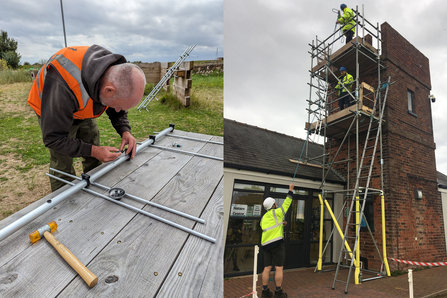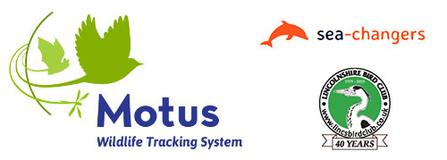We are delighted to have set up a Motus tracking station on the Old Coastguard Station tower next to the visitor centre at Gibraltar Point. Eagle-eyed visitors may have spotted the new aerials, which will pick up signals from special transmitters on passing birds and bats, and feed into valuable global data.
The Motus system uses radio telemetry to detect the movement of animals and birds fitted with lightweight tags. Directional aerials are set up to detect the tags when they come in to range - generally within around 5-7km. Information is currently collated from 1,777 receiver stations in 34 countries, the majority in North and Central America but an increasing number in Europe, including the UK, and around the world.



